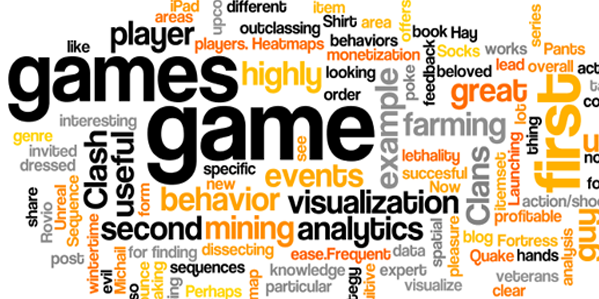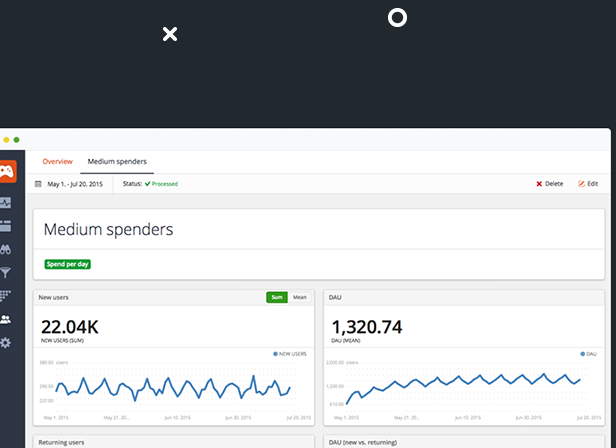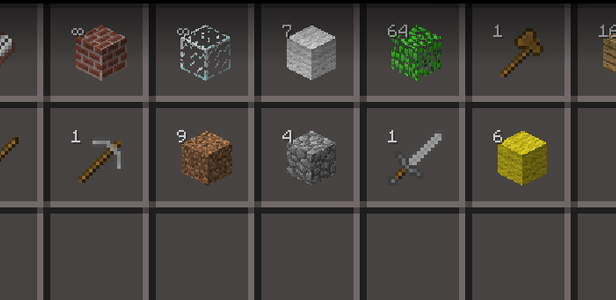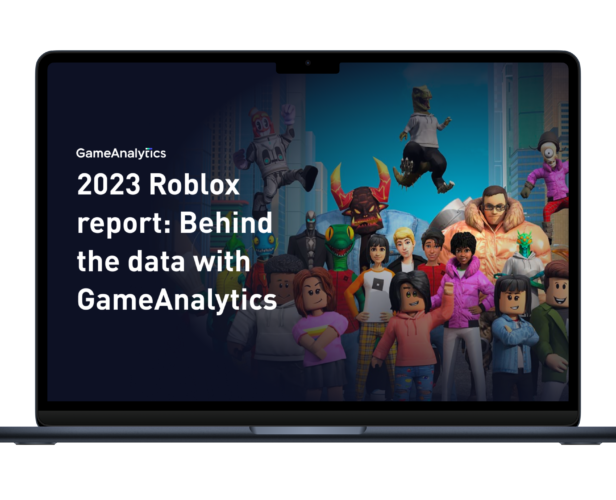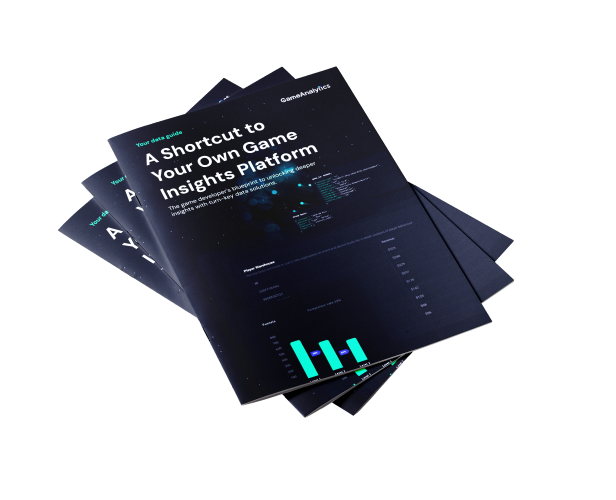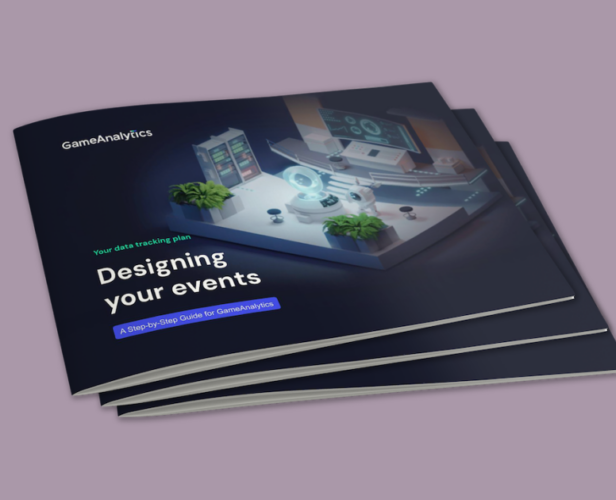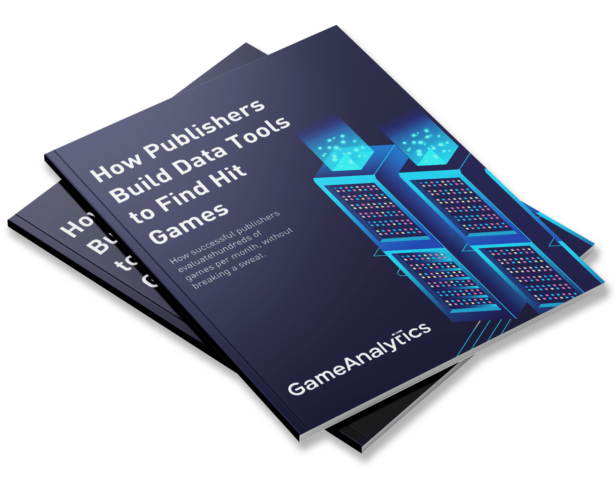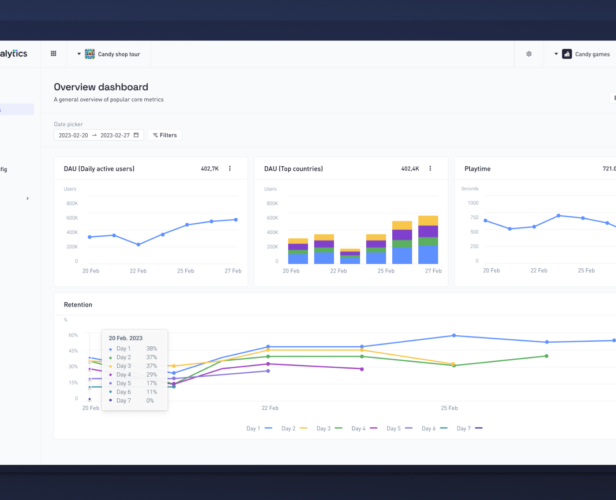Resources > All
Insights and tips about the games industry
Subscribe for gaming insights, industry reports and product updates delivered straight to your inbox.
#Game Deconstructions
Behind the Success of Hay Day
In this guest post, Michail Katkoff combines his game analytics wisdom with the hands-on experience of Timur Haussila, Product Lead at Supercell, to tell you the story of the studio's game Hay Day, from the very first idea to launch. Read on to see the results of this uncanny balet of ideas.
#Tool & Product
Getting Started with Game Analytics: 3 Key Terms
The terminology in game analytics is hampered by some confusion, which fundamentally stems from analytics being a relatively new thing in games. This means that the terms and methodologies are generally borrowed from areas outside of game development and adapted locally. Without understanding key terms, looking for knowledge is seriously hampered so here we will spend a bit of time outlining a few of the most important.
#Ads & Monetization
How Rage of Bahamut Monetizes
This third post from Michail Katkoff, game analytics expert and friend of GameAnalytics, puts the spotlight on Rage of Bahmut - a game of contrasts. Michail explains how this game can effectively monetize players, while otherwise being bland, annoying and lacking polish.
#Data & Analytics
Combatting Churn: 10 Reasons Why Players Quit Your Game
Joakim Achrén, CEO at My Next Games company game and former Director of analytics at Supercell, has more tips to share in this second guest post. Joakim rates the top ten reasons for which players tend to quit social games and also offers solutions to avoid each specific scenario.
#Data & Analytics
7 Tips To Prevent Your Game From Failing
This new guest post features Joakim Achrén, CEO at My Next Games company and former Director of analytics at Supercell. Joakim will share some of his hard-earned tips for ensuring a healthy and promising development process for your game.
#Tool & Product
Getting Started with Analytics 2: The Basics
Analytics is much more than a tool for generating revenue in Free-to-Play games. Analytics is a process of discovering and communicating patterns in data with the express purpose of solving problems. This can be as simple as calculating the average time players spend on a game, to a complete analysis of a company´s internal behavior. In this post we describe what game analytics is and what the fundamental benefits of integrating analytics in game development are.
#Ads & Monetization
How to Monetize an Infinite Runner
Michail Katkoff, Product Manager at Supercell, is back with yet another witty post. Michail is an expert in making profitable games using game analytics and an overall great guy and friend of GameAnalytics. This second post is a complex analysis on what defines a successful infinite runner game. Ladies and gentlemen, Michail Katkoff:
#Tool & Product
Getting Started With GameAnalytics
Analytics is a powerful tool for informing decision making at strategic and operational levels in game development. It will help you answer key questions about design, fun, engagement, play, monetization and more. But it is a relatively new process in game development and there is not a lot of knowledge available out there for the non-expert. In this blog post, we will try to help you get started on analytics.
#Data & Analytics
Frequent Itemset and Association Rule Mining
Frequent itemset mining is an interesting branch of data mining that focuses on looking at sequences of actions or events, for example the order in which we get dressed. Shirt first? Pants first? Socks second item or second shirt if wintertime? Sequence analysis is used in a lot of different areas, and is also highly useful in games for finding behavioral patterns that lead to particular behaviors, for example a player quitting a game. Here is how it works.
#Data & Analytics
Practical Issues In Game Data Mining
Apart from the purely methodological concerns that gains the most attention on this blog, there are a range of important issues to consider when planning to or performing collection of game telemetry and mining of this type of data. For example, confidentiality of user data and effective pre-processing approaches are among the most important. Here we take a brief look at some of them.
#Data & Analytics
Third Party Analytics: What Are The Options?
Outside the companies that actually develop computer games and other forms of interactive entertainment, a rapidly increasing number of third-parties have emerged in the past few years to provide analytics-related services to companies. Here we provide a brief overview of the types of providers available and the pros/cons of their services.
#Mechanics & Features
Feature Selection and the Law of Diminishing Returns
A problem that recurrently mentioned during the recent Data Science Day in Berlin is feature selection: given the array of possible variables/features to track from a digital game, which of these should we track? The solution I heard mentioned most often was: track everything, analyze everything. However, this approach is not without its problems, notably in terms of the resources it requires to analyze everything. Another thing to consider is the law of diminishing returns.
#Data & Analytics
What Is Game Telemetry?
Telemetry one of the fundamental terms in game analytics, describing the collection of data over a distance. The collection, analysis and reporting of user-behavior telemetry is the foundation for current analytics in game development. There is some confusion about the term, however, so we wanted to provide a bit of information about what telemetry is and its properties.
#Editor's pick
2023 Roblox report: Behind the data with GameAnalytics
Download a comprehensive report of Roblox player behavior and game performance based on GameAnalytics data from 2023. This report highlights critical benchmarks and insights to help Roblox creators optimize their games. What’s inside? Devices analysis Players’ daily session frequency Average revenue spent per user Session length and count benchmarks Retention benchmarks Revenue benchmarks
#Editor's pick
The Game Developer’s Handbook to Mastering Data Solutions
Data is the key to success in the ever-evolving landscape of game development. Explore this guide to transform your data into insights using our turn-key data solutions. What’s inside? Our comprehensive guide explores cost-saving strategies and real-world applications for advanced use cases. Learn how to seamlessly integrate data sources, unlock detailed player insights with Player Warehouse, access real-time data with Raw Export, and ensure data privacy compliance.
#Case study
Developing a #1 VR MMO: Ramen VR’s Journey with GameAnalytics
Discover how Ramen VR used data-driven game development to launch "Zenith: The Last City", which became the #1 bestselling game all major VR platforms—including Meta Quest/Rift, Steam and PlayStation VR.
#Editor's pick
Using AI to Supercharge Your Game Art Design
Discover how tweaking AI tool settings can help you generate varied art styles, produce better concepts, and speed up the process from prototype to final design. With AI on your team, creating unique game art has never been easier or faster.
#Editor's pick
Event Design & Tracking Guide for GameAnalytics
Learn how to create an adaptable tracking plan, enabling you to unlock richer insights and maximize the value of your data within GameAnalytics.
#Editor's pick
From Zero to Hero: Tracking Key Success Pillars in Gaming
Our COO, Allison, recently joined Mobvista for the first episode of their "From Zero to Hero" video series. Watch the video today for a detailed overview into tracking three essential pillars of gaming success: Acquisition, Engagement, and Monetization.
#Editor's pick
How studios use DataSuite to find hit games
Learn how successful publishers evaluate hundreds of games per month, to find the next hit game.
#Editor's pick
Among Us VR dev talks about how to create immersive worlds
VR is all about immersion. It’s about allowing players to lose themselves in more than just a game, but a new world. You have to build VR experiences the right way to make this happen. This goal is always top-of-mind for Schell Games. In this interview, we spoke to Schell Games’ Vice President of Product, Charlie Amis, to learn their story. “For VR, you want to make the player feel like they’re actually in the world you’ve created. This isn’t as true or a high priority in PC and console games. If people start to lose that sense of presence and immersion, then a lot of the reason they put the headset on is hurt. They want to go to another world or be someone new. So you need to help them feel like they’re really there and really that...
#Editor's pick
GameAnalytics H1 Update: New Product Improvements!
It’s been a busy time since February, when the largest update in GameAnalytics history was launched. Read on for more information about what’s changed recently, and new functionality coming to the platform very soon.
#Case study
How TapNation uses DataSuite to increase the LTV of 19 hit games by 50% in only 6 months
Smashing obstacles with Giant Rush While they’ve seen huge improvements using DataSuite across their portfolio, one game stands out in particular: Giant Rush. (And not just because the character is huge.) The title has now reached over 140 million downloads. And, through a series of A/B tests and insights from the data they collected, they’ve been able to increase the LTV by a whopping 200% over six months for this specific title. “It’s because we A/B test every day,” Philippe Grazina from TapNation says. “We ask questions like: When are players leaving the game? For example, the boss in Giant Rush. If we spot that they’re leaving at the same point every time, we know we need to make a change. Small details like that really help.” Through these granular insights, TapNation can iterate and improve on their game step...
#Editor's pick
How to Build a Data Warehouse for Games from Scratch
Over our last couple of blogs around data warehouses, we’ve explained how they let you analyze data from across your portfolio and look at what insights you can gather from them. Now, we’ll dive into how to build a data warehouse. What steps do you need to take and what resources will you need? To figure this out, we’ve rounded up the costs, steps, and tools we think you’ll need to get started. Please note, that we haven’t included the cost of running an engineering department (which you’ll need), which can end up being a lot of $$$. What do I need to get started? Before you start, you’ll need to ensure you have the right people. You’ll likely need a software or data engineer, and perhaps an architect or DevOps engineer. You’ll also need to budget for tools like...


